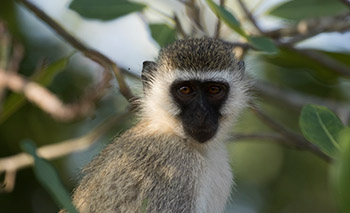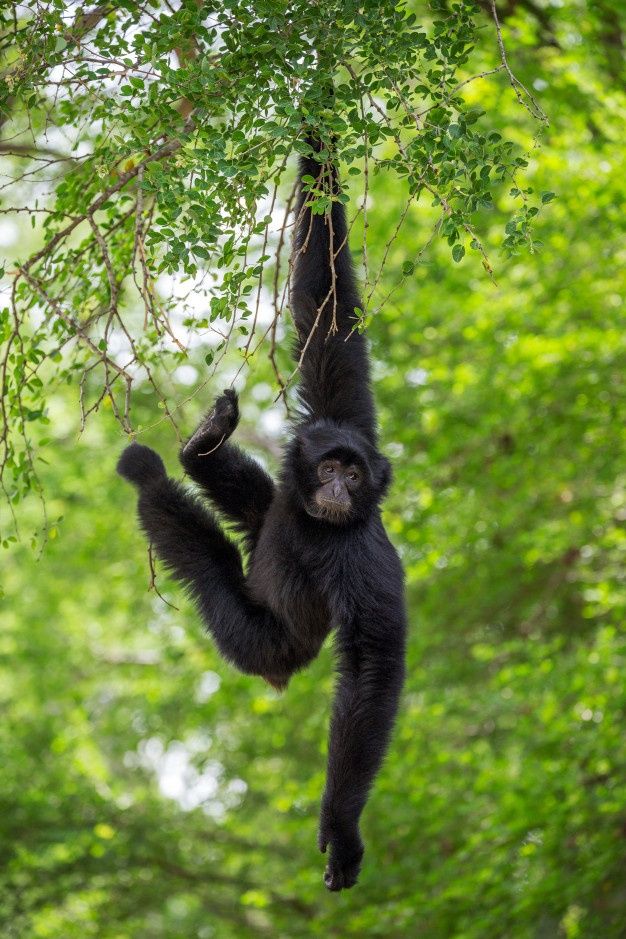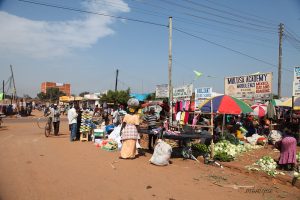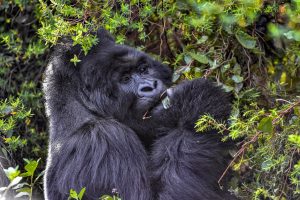Budget Safaris to See Apes in Uganda
Budget Safaris to See Apes in Uganda, known as the “Pearl of Africa,” offers incredible opportunities to witness apes such as mountain gorillas, chimpanzees, and other primates in their natural habitats. While gorilla trekking and primate safaris can often seem like luxury activities, there are budget-friendly options that allow travelers to experience these awe-inspiring creatures without breaking the bank. Here’s a guide to planning a cost-effective safari to see apes in Uganda.

Overview of Uganda’s Ape Experiences
Uganda is home to two iconic ape species: the endangered mountain gorilla and the chimpanzee. These primates are primarily found in:
- Bwindi Impenetrable National Park: Famous for mountain gorilla trekking.
- Kibale Forest National Park: Known as the “primate capital of the world,” with 13 primate species, including chimpanzees.
- Mgahinga Gorilla National Park: Another gorilla trekking destination that also offers the chance to see golden monkeys.
- Kyambura Gorge (Queen Elizabeth National Park): Offers chimpanzee trekking in a scenic setting.
Budget safaris to these locations are possible with careful planning and choosing the right operators and accommodations.
Budget Gorilla Trekking in Bwindi Impenetrable National Park
Gorilla trekking is the highlight of any Ugandan safari, and Bwindi is the top destination. Here’s how to make this experience budget-friendly:
- Gorilla Permit Costs:
- A gorilla trekking permit in Uganda costs $700 per person, which is lower than Rwanda’s $1,500.
- For East African residents, the permit is significantly discounted to around $100.
- Book permits directly through the Uganda Wildlife Authority (UWA) or through budget tour operators to avoid extra fees.
- Affordable Accommodation:
- Budget lodges and camps near Bwindi include Broadbill Forest Camp, Buhoma Community Rest Camp, and Ride 4 a Woman. These options provide basic but comfortable facilities, often with shared amenities.
- Group Tours:
- Joining a group safari is a great way to split transport and guide costs. Many budget operators organize shared safaris, making them more affordable for solo travelers or small groups.
- Transport Options:
- Public buses from Kampala to Kisoro or Buhoma (gateways to Bwindi) are an affordable way to reach the park. While slower and less convenient than private transfers, they significantly reduce costs.
- Shared 4×4 vehicles can also be arranged through tour operators.
Chimpanzee Trekking in Kibale Forest National Park
Chimpanzee trekking is another must-do activity in Uganda. Kibale Forest offers the best opportunities to see chimps up close.
- Chimpanzee Permit Costs:
- A chimp trekking permit in Kibale costs $200 per person for foreign visitors and $30 for East African residents.
- For budget travelers, opt for chimp trekking in Budongo Forest (near Murchison Falls National Park), where permits are cheaper at $90.
- Affordable Lodges:
- Budget-friendly accommodations near Kibale include Chimpanzee Forest Guesthouse, Kitojo Guest Cottages, and Rweteera Safari Park.
- Camping is also available at some lodges for a more cost-effective option.
- Combine Activities:
- Kibale offers additional activities such as the Bigodi Wetlands Walk for $40. Pairing this with chimpanzee trekking allows you to maximize your visit on a budget.
- Transport Tips:
- Public minibusses (matatus) connect major towns like Fort Portal to Kibale. These are an inexpensive option for independent travelers.
Combining Gorilla and Chimpanzee Trekking
For travelers wanting to experience both gorilla and chimpanzee trekking, combining Bwindi and Kibale is a practical and rewarding option. Many budget operators offer multi-day itineraries covering both parks, which include group transport, budget accommodation, and discounted activities.
Sample 5-Day Budget Safari Itinerary:
- Day 1: Transfer from Kampala to Kibale Forest National Park.
- Day 2: Chimpanzee trekking and Bigodi Wetlands Walk.
- Day 3: Travel to Bwindi Impenetrable National Park.
- Day 4: Gorilla trekking.
- Day 5: Return to Kampala or Entebbe.
Other Budget Ape-Watching Destinations
- Kyambura Gorge (Queen Elizabeth National Park):
- Offers a budget-friendly alternative for chimpanzee trekking, with permits priced at $50–$60.
- Budget accommodations in the park include Pumba Safari Cottages and The Bush Lodge.
- Mgahinga Gorilla National Park:
- If gorilla trekking permits in Bwindi are fully booked, consider Mgahinga. The permit cost remains $700.
- Accommodation options like Amajambere Iwacu Community Camp cater to budget travelers.
- Combine gorilla trekking with golden monkey tracking ($60 permit) for a unique primate experience.
Tips for a Cost-Effective Safari. Budget Safaris to See Apes in Uganda
- Travel in the Off-Season:
- The low seasons (April, May, and November) often come with discounts on accommodation and activities. Roads may be muddy, but fewer crowds enhance the experience.
- Opt for Community Lodges:
- Community-run lodges not only support local initiatives but are often more affordable than commercial lodges. Many, like Buhoma Community Rest Camp, offer basic amenities at great value.
- Pack Smart:
- Save on equipment rentals by bringing your own hiking boots, rain gear, and reusable water bottles. Essentials like insect repellent and snacks can also reduce costs.
- Book Early:
- Permits for gorilla trekking are limited, so booking early ensures availability and avoids last-minute price hikes.
- Limit Extras:
- Stick to your safari essentials and avoid optional luxury activities or expensive meals that can inflate your budget.
Why Choose Budget Safaris in Uganda?
- Affordable Yet Authentic:
- Budget safaris still provide meaningful wildlife encounters and cultural experiences without compromising the thrill of adventure.
- Accessibility:
- Uganda’s parks are relatively easy to reach, even for budget travelers, thanks to public transport and affordable safari operators.
- Supporting Local Communities:
- By choosing community-based accommodations and tours, you contribute directly to conservation efforts and local livelihoods.
Gorilla Trekking Regions in Bwindi
Bwindi Impenetrable National Park is divided into four sectors, each offering unique trekking experiences. Adding details about these regions can help readers plan their visit effectively:
- Buhoma Sector: The most popular sector, known for its accessibility and variety of accommodation options. It’s also home to some of the oldest habituated gorilla groups.
- Ruhija Sector: Offers quieter trails and stunning views. It’s ideal for bird watchers as well as trekkers.
- Nkuringo Sector: A more physically demanding option, this sector is great for adventurous travelers.
- Rushaga Sector: Known for having the highest number of habituated gorilla groups, making it a good choice for securing permits.
Gorilla Habituation Experience
In addition to regular gorilla trekking, Uganda offers the unique Gorilla Habituation Experience. Visitors can spend four hours observing gorillas in their natural environment while learning about the habituation process. This activity costs $1,500, which is higher than the standard permit but provides a more intimate experience.
Other Primate Tracking Opportunities
Uganda is home to 20 primate species, so mentioning other tracking opportunities could add depth to the post:
- Golden Monkey Tracking: Available in Mgahinga Gorilla National Park, permits cost $60.
- L’Hoest’s Monkeys: Commonly seen in Bwindi and Kibale.
- Olive Baboons: Often spotted in open savannah areas such as Queen Elizabeth National Park.
Cultural Experiences
Combine your primate safari with cultural activities to enrich your trip:
- Batwa Cultural Experience: Visit the Batwa pygmies near Bwindi to learn about their traditional forest-dwelling lifestyle.
- Bigodi Wetlands Community Walk: Explore local communities near Kibale Forest, interact with residents, and learn about their daily lives.
Packing Tips for Primate Safaris
Proper preparation is key to a successful trekking experience. Highlighting essential items ensures readers are well-prepared:
- Clothing: Lightweight, long-sleeved shirts and trousers to protect against insects.
- Rain Gear: Bwindi and Kibale are rainforests, so a waterproof jacket is crucial.
- Sturdy Hiking Boots: Essential for navigating slippery trails.
- Daypack: To carry water, snacks, and camera equipment.
- Insect Repellent: Protects against mosquitoes and other bugs.
- Gloves: Useful for gripping vegetation during treks.
Environmental and Ethical Guidelines
Educating readers on responsible tourism ensures their safari is eco-friendly and respectful:
- Keep a Distance: Maintain at least 7 meters (23 feet) from the apes to prevent disease transmission.
- No Flash Photography: Protect the apes’ sensitive eyes.
- Minimize Noise: Avoid startling the animals.
- Leave No Trace: Carry all trash out of the forest.
- Support Conservation: Choose operators and accommodations that contribute to wildlife protection.
Transportation Options
For budget travelers, transport can significantly affect costs:
- Public Transport: Uganda’s network of minibusses and buses connects major towns, although they may not reach remote parks.
- Shared Safari Vans: Many operators organize group tours where costs are split among participants.
- Car Rentals: Affordable options are available in Kampala for self-drive safaris, though 4×4 vehicles are recommended for rough terrain.
Wildlife Beyond Primates
Emphasize that Uganda offers more than apes, making it a versatile safari destination:
- Tree-Climbing Lions: Found in the Ishasha Sector of Queen Elizabeth National Park.
- Game Drives: Spot elephants, buffaloes, and antelopes in Queen Elizabeth or Murchison Falls National Park.
- Bird Watching: Uganda is a birdwatcher’s paradise, with over 1,000 species. Highlight key spots like the Kazinga Channel and Bigodi Wetlands.
Affordable Dining Options
Budget travelers can save money by eating at local restaurants or lodges offering set menus. Suggest popular dishes to try:
- Rolex: A rolled chapati filled with eggs and vegetables.
- Luwombo: A traditional dish of meat or vegetables steamed in banana leaves.
- Matoke: A staple made from boiled green bananas.
Health and Safety Tips
Provide reassurance with practical advice:
- Vaccinations: Ensure travelers know the required vaccinations, such as yellow fever.
- Malaria Prevention: Recommend using antimalarial medication and insect repellent.
- Fitness Preparation: Trekking can be strenuous; encourage light training before the trip.
Budget-Friendly Alternatives to Gorilla Trekking
For those who find the $700 permit cost prohibitive, suggest alternative activities:
- Chimpanzee Trekking: At $200, it’s more affordable and equally rewarding.
- Golden Monkey Tracking: At $60, it offers a unique primate encounter.
- Nature Walks: Trails in Bwindi, Kibale, and Mgahinga provide opportunities to observe wildlife without a permit.
Currency and Payments
Budget travelers need to know about money matters:
- Local Currency: The Ugandan Shilling (UGX) is used for most transactions.
- Credit Cards: Accepted in major towns, but cash is essential in remote areas.
- Tipping: Encourage travelers to tip guides, porters, and lodge staff.
Visa and Entry Requirements
Clarify visa policies to ensure smooth entry into Uganda:
- E-Visa: Easily obtainable online for $50.
- East African Tourist Visa: Allows travel to Uganda, Kenya, and Rwanda for $100, saving costs for multi-country trips.
Timing Your Visit
Discuss the best time for budget safaris:
- Dry Season (June-August, December-February): Ideal for trekking due to stable weather and easier trails.
- Low Season (March-May, October-November): Offers discounted accommodations but comes with higher chances of rain.
Importance of Gorilla Conservation
Educate readers about how their visit contributes to conservation:
- Revenue Allocation: Gorilla permit fees support anti-poaching efforts, park management, and community development.
- Community Involvement: Many lodges and tour operators work closely with local communities, ensuring tourism benefits are shared.
Conclusion
Budget safaris to see apes in Uganda are an enriching and accessible way to connect with some of the planet’s most remarkable primates. From the towering mountain gorillas of Bwindi to the lively chimpanzees of Kibale, Uganda offers unforgettable encounters at a fraction of the cost found in neighboring countries. With careful planning, savvy choices, and a spirit of adventure, you can enjoy a truly transformative wildlife experience without overspending. Whether trekking through misty forests or exploring local villages, your journey will leave you with memories to treasure for a lifetime.




